
28 minute read
Aged care homes
Your home
THE QUEENSLEA, CLAREMONT
OPENING EARLY 2021
The Queenslea comprises a Residential Aged Care home, fully Serviced Apartments for seniors, and Early Learning Centre for more than 100 children. Our home’s state-of-the-art design, including a premier Wellness Centre, will foster wellbeing and drive an intergenerational care program between our residents, seniors and children.
The Queenslea by Oryx Communities, is located on the corner of Shenton and Graylands Roads, close to the Claremont Quarter shopping centre, Lake Claremont parkland and cafés, Claremont train station and numerous sporting facilities including Claremont Football Club, Claremont Aquatic Centre and Claremont Lawn Tennis Club.
The Queenslea is truly a vibrant, safe place to live in comfort, with dignity and independence.

With limited opportunities available, it’s time to secure your place at The Queenslea in Claremont, Western Australia.
Call 08 6424 3335 or visit thequeenslea.com.au
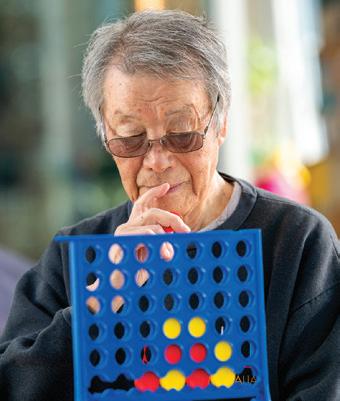
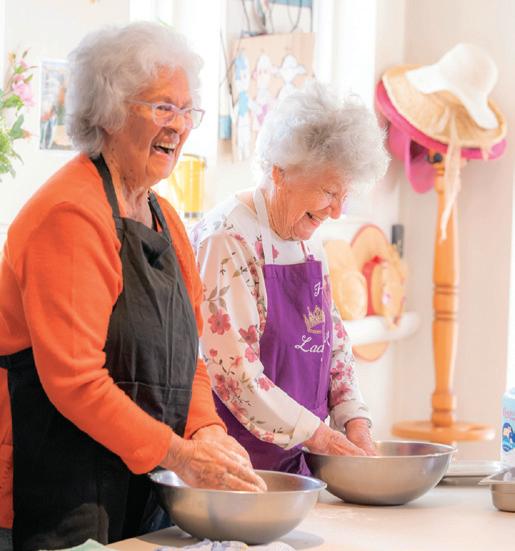


Pets can help lessen feelings of loneliness and isolation, and some homes are happy to accommodate you and your pet. Some nursing homes have live-in pets. You’ll find these C listed in the directory section of this guide, starting on pages 120–138. Accreditation and certification All Government funded care homes must meet required accreditation standards and demonstrate continuous improvement with regard to the quality of care and services provided to residents. The standards that must be met cover areas such as management, staffing, health and personal care, resident lifestyle, living environment, catering, cleaning, continuous improvement, and safety and security. The Aged Care Quality and Safety Commission is responsible for monitoring residential aged care services to ensure their compliance with the accreditation standards. You can ask the provider for the accreditation status of the home or access reports and find information about the process on the Commission’s website – agedcarequality.gov.au. New quality standards In 2019, a new set of Aged Care Quality Standards came into effect, applying to all Government funded aged care services including residential aged care and home care providers. The eight new standards replaced the previous standards and will have a much stronger focus on consumers to help them make informed decisions about aged care services. It gives consumers confidence that aged care providers will work in partnership with them and their families to deliver care that supports their health, wellbeing and quality of life. The new Quality Standards include the following focus areas: Consumer dignity and choice Ongoing assessment and planning with consumers Personal care and clinical care Services and supports for daily living Organisation’s service environment Feedback and complaints Human resources Organisational governance Each of the standards looks at three key aspects: What is the outcome for the consumer What is the expectation for the organisation What are the organisational requirements to show that the standard has been met The new standards revolve around consumers, their families and the staff providing care. This partnership between the provider and consumer needs to work in order for the eight areas to work.
Aged care homes
Aged care homes
Charter of Rights Supporting the new Aged Care Quality Standards is a new single Charter of Aged Care Rights, protecting the rights of consumers receiving aged care services and their right to be properly looked after, treated well and given high quality care and services. All aged care providers have to provide a personally signed copy of the Charter of Rights to every one of their residents or care recipients. The new Charter covers 14 fundamental protections stating all older Australians receiving any type of Government funded aged care supports have the right to: 1. Safe and high quality care and services; 2. be treated with dignity and respect; 3. have your identity, culture and diversity valued and supported; 4. live without abuse and neglect; 5. be informed about your care and services in a way you understand; 6. access all information about yourself, including information about your rights, care and services; 7. have control over and make choice about your care and personal and social life, including where the choices involve personal risk; 8. have control over, and make decisions about, the personal aspects of your daily life, financial affairs and possessions; 9. your independence; 10. be listened to and understood; 11. have a person of your choice, including an aged care advocate, support you or speak on your behalf; 12. complain free from reprisal, and to have your complaints dealt with fairly and promptly; 13. personal privacy and to have your personal information protected; 14. exercise your rights without it adversely affecting the way you are treated. By signing the Charter you acknowledge that your provider has given you information about your rights in relation to the aged care service, information about your rights under the Charter and a copy of the Charter signed by your provider. As a consumer, you have the option of signing the Charter of Aged Care Rights, however, even if you choose not to sign the document you can still receive care and services. Complaints If you have concerns or are unhappy about the standard of care you are receiving, you or your representatives are strongly encouraged to firstly take all complaints to the facility management for resolution. It’s always best to address concerns rather than leaving it to escalate. If you don’t feel comfortable to deal with it yourself, you can ask an advocacy service to help you. If the matter is not resolved, you can then make complaints to the Aged Care Quality and Safety Commission on 1800 951 822 or visit agedcarequality.gov.au.


mercycare.com.au
Anyone can make a complaint about anything that may constitute a breach of the service provider’s responsibilities to past or present residents. Costs for residential care
Aged care homes charge a range of fees to cover the cost of care, accommodation and living expenses, and these can vary enormously between facilities, and from resident to resident.
Understanding the rules and seeking specialist advice from an aged care financial advisor to minimise costs is recommended. Both your income and financial assets affect your entitlements. The income and asset tests have been combined, to ensure a consistent fees policy. This will address the issue of asset rich, income poor residents paying for all of their accommodation and nothing for care, and the income rich, asset poor residents paying for their care but not for accommodation. The cost of care is divided into two parts – daily care fees and accommodation payments. Basic Daily Fees As a resident in an aged care home you are asked to pay a daily fee as a contribution towards the cost of care and living expenses, such as meals and refreshments, cleaning, laundry, heating and cooling, as well as social activities. In addition, the daily fee contributes to the costs for personal care including assistance with daily living such as bathing, dressing and toileting, assistance with mobility aids, therapy and certain medical and pharmaceutical services. The maximum Basic Daily Fee for all permanent residents who enter an aged care home is 85 percent of the annual single basic Age Pension. This applies as the maximum Basic Daily Fee for all respite residents. It is adjusted each March and September at the same time as the Age Pension. As of July 2020, the maximum Basic Daily Fee is $52.25 per day for all full pensioners and some part pensioners. Depending on your income and level of care, you may also be asked to pay an income tested fee as part of the daily fees. However, this does not apply to respite residents. If you do receive income other than your pension, you will be assessed by Centrelink, or Veterans’ Affairs if you are a veteran, to determine how much extra you can be asked to pay as an income tested fee. Basic Daily Fees – prior to 20 March 2008 If you were a permanent resident in an aged care home, prior to 20 March 2008 (including residents on leave), you will continue to be subject to the pre 20 March 2008 rules governing the Basic Daily Fee unless you are discharged from permanent aged care for a continuous 28 days.
Aged care costs
Aged care costs
How much will I pay? If you can afford to, you will pay a basic fee of up to 85 percent of the single basic pension, a means tested (your income and assets combined) contribution to your accommodation, and a means tested contribution to your care. The maximum means tested contribution will be allocated toward your accommodation payment until the full cost is paid and then toward your care fee. The family home will continue to be exempt from the aged care assets test if occupied by a spouse or other protected person. Even when the value of your former home is included as an assessable asset, its value will be capped at $171,535.20 (July 2020 prices). It is only counted in determining your ability to pay for your accommodation. No one will need to pay a care fee greater than the cost of their care. In addition, an annual cap of $28,087.41 will apply to your means tested contribution to your care costs, together with a lifetime cap of $67,409.85 for means tested care fees (Rates as at July 2020). Any income tested contributions you may have made as recipient of Home Care Packages will be taken into account in calculating lifetime care expenditure. Accommodation payments Accommodation payments are different from daily care fees. They are used by the aged care home as capital funding to improve the quality of the buildings and services they provide. Not everyone pays an accommodation payment. It depends on the value of your assets and income at the time of entry into care. If you have more than $50,500 in assets and income, you can be asked to pay an accommodation payment, but you must be left with at least $50,500 in assets after your payment (Rates as at July 2020).
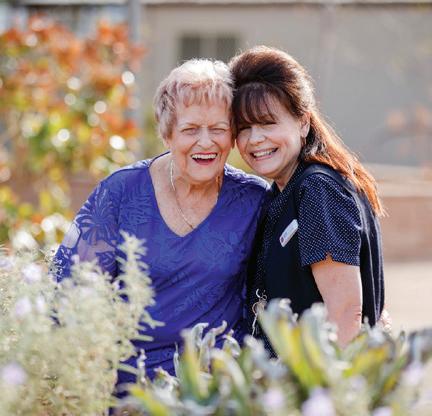
HOLISTIC CARE THAT’S ALL ABOUT YOU
Our purpose is to promote a unique experience of choice, lifestyle and belonging for all people as they age.
1300 111 227 agedcare.salvos.org.au
Choose how you pay When moving into an aged care home, if you have the capacity to contribute to the cost of your accommodation, you can now choose how you pay for it.
You have a choice of three options, however, if you start with one option and change your mind, you have up to 28 days from the date you move into the care home to decide how you wish to pay. Payment Option 1: Refundable Accommodation Deposit (RAD) This is a single payment made to the care home and works similar to an interest-free loan. The balance of the deposit is guaranteed to be refunded when you leave the home, but only after any amounts which have been used to pay for agreed services have been deducted. Payment Option 2: Daily Accommodation Payment (DAP) In this option, you pay a periodic payment (usually on a monthly basis) for your accommodation; it is calculated based on the daily rate of the RAD. To calculate the daily payment equivalent of the refundable deposit, the RAD is multiplied by the Maximum Permissible Interest Rate (MPIR) and divided by 365 days. The MPIR is set by the Government and is updated every three months – as of 1 July 2020, it is 4.10 percent. The daily payment amount must be equivalent to the refundable deposit amount and is the maximum you can be charged per day for the room. These periodical payments are not refunded when you leave the home.
Payment Option 3: Combination payment of RAD and DAP If you wish you can also choose to pay a combination of both a RAD and a DAP. For example, let’s assume the RAD is $400,000 but you want to only pay half of a deposit ($200,000) and the other as a DAP. Use this formula to calculate the DAP: (Balance of price x MPIR) / 365 = ($400,000 - $200,000) x 4.10% / 365 = $22.46 per day (MPIR from July 2020). Or use our easy to use fee-estimator calculator on agedcareguide.com.au/nursing-home-fee-estimator For further information, call My Aged Care on 1800 200 422 or Centrelink on 13 23 00, or discuss with a placement consultant or financial advisor. Disclaimer - This information is a summary of the main provisions relating to aged care costs and while care has been taken to ensure that it is current on date of publication, it should not be taken as an authoritative source. Please phone 1800 200 422 for more complete, up-to-date information.
RAD and DAP

Applying to aged care homes As soon as you have been approved by an Aged Care Assessment Team (ACAT) for Government funded residential care, you can begin looking for your future home.
You can do this yourself or you can hire a placement consultant to do this for you. When searching for nursing homes, decide what features are important to you. Are you looking for an extra service facility, a specific cultural environment or a facility with pets? It is important to know and understand the types of homes that are available in your area because this may affect the cost and services you receive. It is recommended that you visit as many homes as possible, just as you would when buying or renting a house. This will allow you to get a feel for the culture of the home and its surroundings. You can also use residential respite as a way of finding out about the quality of care at a nursing home before deciding if the home is a good place for you to move into. When you have narrowed down which homes would suit your needs and wants, it is best to apply to a number of homes to increase your chances of finding a place quickly. Waiting for residential care
Some aged care homes may have waiting lists and the length of these varies between homes. If your situation is urgent, please inform the staff at the home.
Aged care homes cannot predict or know when a vacancy will occur, so it is important to keep in regular contact with the aged care homes to ensure they are aware you are still interested in admission to their home. If you’ve engaged the services of a placement consultant they will monitor vacancies for you. What happens when a vacancy occurs? The person in charge at the aged care home will either ring you, your carer or family directly, or phone the social worker if you are in hospital. You may be asked to make a decision within hours because there are usually other people also waiting. You, or the relevant hospital worker, will need to arrange for your transfer to the home as soon as is practicable. If you are unable to move into a home straight away, you will be given seven days after you have agreed to accept the place to move in. This is called pre-entry leave.
Applying to a home
Deciding on a home
From the date of acceptance you may be charged for your care and be eligible to receive financial assistance from the Government. Be aware that if you move into an aged care home that’s not your first choice, your priority on the waiting list of your preferred home will drop. It is not acceptable to be charged any fees, or be expected to make any donation, before you formally accept a place in an aged care home. Deciding on a home
There are a number of things to consider when deciding which aged care home will best suit your needs.
The following is a brief checklist: Is the home clean, fresh and in good repair? Are the staff warm and friendly? You want to be able to feel at ease and comfortable in communicating with the staff. How many staff work at the home and what is the night time ratio of staff to residents? Is the home secure, particularly at night? Are there keypad locks on the doors or are CCTV cameras installed? Does the home have the provision for you to age in place and remain as your care needs increase? Do they offer single rooms with ensuite? If you are looking to move into a home with your spouse, is this provision available? Are clothes laundered on or off site? Does the room have access to a private phone line, internet connection or NBN, or pay TV? Are the floor coverings clean and fresh, or is there an odour throughout the home? Is the room temperature comfortable for you, and are you able to control your own room temperature? What personal items and furnishings can you bring into the home, and what provisions are there for storage of personal items? Inspect the kitchen if possible, and find out if meals are cooked on site or are delivered. Are the meals flexible and will they meet your special requirements? Are there spaces for you to meet with family and friends and to celebrate special events? If you like pets, find out if the home is pet friendly and either has pets at the home or a visiting pet program. Be sure to enquire about the range of activities available and entertainment programs. These are vital for your ongoing wellbeing. Equally beneficial are outdoor areas or gardens; if relevant, check whether they are secure. Other services you may be looking for include hairdressing salon, on site café, a chapel or provision for church services.
Moving into a home
The process of moving in is often referred to as the ‘admission process’ and starts with an initial introduction, orientation and assessment.
During the assessment a staff member will gather information including medical conditions, family history, food preferences, social and recreational likes and dislikes, and interests. This information will be used to create a care plan. The care plan is updated regularly and you can request to see a copy at any time. Family members and carers are welcome to assist in identifying social and care needs. What can you bring with you? Your aged care home will already have most of the furniture and furnishings, such as beds, chairs, wardrobe, curtains and floor coverings, so it may be helpful to directly ask the home what you can bring with you. Personal items Having personal belongings around you may help you to feel at home in your new environment. Some people may like to bring family photographs, their favourite films, books, music or other treasured items. Clothing It is important to ensure that personal clothing is properly labelled. Most nursing homes will launder your clothing either on site or through a laundry service. Bring enough clothing to allow for items being washed as it might take a couple of days before clean laundry is returned to you. Because of the large volume of washing, nursing home laundries often use commercial washing and drying machines, so make sure your clothes are machine washable and labelled with your full name. Continence aids Residents with higher level care needs, who require products for the management of incontinence, will have these provided by the aged care home. Other residents may be required to purchase these items. Radios, TVs, computers, digital clocks Residents can bring with them their preferred electrical and electronic items. Each item will be checked, tested and tagged for use. Medication It is important that you bring all prescription medication you’re currently taking with you on admission. Care staff will manage and administer the medication to ensure safe and quality use of your medicines.
Moving into a home
Daily living
Topical creams, herbal remedies, vitamins and elixirs, which are non-prescription items, should be declared to the staff.
Toiletries The aged care home supplies the basic necessities such as toothpaste, soap and toilet tissue. Specific items or particular brands need to be purchased at your own expense.
Mobility and wheelchairs Wheelchairs, scooters, walking frames, and other mobility aids will be assessed to ensure that these are appropriate to your current situation. The maintenance and upkeep of scooters and wheelchairs is your responsibility.
Making the transition Once you have been offered a place in an aged care home, it is also important to organise your medical and financial matters, and who you will need to tell about your move. If you have not done so already, this is a good time to talk to your loved ones about your wishes for your future medical care. Writing your wishes in a letter or statement can help guide health professionals and those close to you if you become seriously ill or injured and are unable to make decisions about your own care. Daily living in a nursing home
Moving house is often stressful and it may take time to settle into your new environment. Here’s what you can expect from life in a nursing home.
If you are thinking about moving into a nursing home you’re likely to experience a massive range of emotions, varying from relief and excitement to uncertainty and apprehension. Living in a nursing home will be different and it may take a while for you to settle into your new life. Generally life in a nursing home will be easier for you, and many residents have reported they actually enjoy an enhanced quality of life and improved social life. It’s your home While areas such as the dining room and lounge are communal, your room is your own. Nursing homes positively encourage you to bring personal items for your room, such as pictures, photos, ornaments, furniture throws and smaller pieces of furniture. Find out prior to moving what extra personal belongings you can bring so you can still enjoy the things which have meaning to you.



Daily living
Social aspects and routines Chances are, you’ve moved from living in a house on your own or with a partner, so you’ll need to get used to a few more people being around. However, the choice is yours as to how social you want to be. You can choose to be social in the communal areas and spend time with other residents or simply find a quiet corner or remain in your room to enjoy your own company. Nursing home staff are generally friendly and outgoing, and they will respect your need for privacy. Many nursing homes have strong links to the local community. You can choose to get involved with activities such as meeting local school children or other people from other groups. As well as adjusting to new people, there may be some changes to your daily routines, such as slightly different meal and shower times. Multiple activities Nursing homes offer many social aspects and multiple activities such as exercise classes, religious services/classes, bingo, arts and craft, concerts and outings. It doesn’t mean you have to take part – you still decide what you want to do. You can continue to enjoy your usual activities outside the nursing home, such as attending any regular classes or meeting friends in your favourite coffee shop. The choice of how you spend your time is yours. Partners and pets Some homes offer rooms for couples in the form of adjoining rooms, double rooms, or even a single unit for couples. This means couples can continue living together even if they have different care and support needs. While most homes do not allow residents to have their personal pets, many homes now have ‘live-in’ animals such as cats, rabbits, dogs and birds. Some nursing homes also arrange for a variety of animals to visit regularly. Family and friends Your family and friends are always encouraged to visit and many nursing homes also have special areas available for private functions – this means you can still hold special events for family and friends in your nursing home. Going on a holiday When you live in an aged care home you can still go on a holiday. You can leave the aged care home for up to 52 nights in a financial year. This is called ‘social leave’. The Government will continue to pay subsidies on your behalf to the aged care home and you still have to pay your daily fees and income tested fees. If you are away for longer than 52 nights, the Government will stop paying subsidies and you may be asked to pay any owing amounts to the aged care home. The 52 night rule can not be extended.
Resident Agreement
The Resident Agreement is a legal agreement between you and your aged care home.
Before you move in, an aged care home will offer you a Resident Agreement to sign, which may cover things like the services you will receive, the fees to be paid and the rights and responsibilities you have as a resident of the home. Your Resident Agreement should include the following: the policies and practices used to set your fees and charges; the level of daily fee you’ll be asked to pay; any extra services you’ve agreed to receive, and their costs; any circumstances where you might be asked to leave and how the aged care home will help you find somewhere more appropriate; your rights and responsibilities as a resident in your new aged care home; your aged care home’s responsibilities to you as a resident; how the aged care home will deal with any complaints you, your carer, friends or family may make; and any other matters agreed between you and the aged care home’s manager, within the requirements of the AgedCareAct1997.
Resident Agreement
Midland Nursing Home has provided aged care services that are consumer-directed for over 45 years in a safe, encouraging and welcoming home that is surrounded by established gardens in the Swan Valley.
• Large home with 110 beds, with single and twin • Both pre-planned and short notice respite care share accommodation on offer • Secure living environment available for • Continuity of care with dedicated and qualified consumers that require a higher level of support staff and specialist services • Specialise in high care for both respite and • Nursing care 24 hours per day and a lifestyle permanent consumers, supporting complex care program 7 days a week needs, including those living with dementia • Qualified chefs providing fresh food prepared on-site for all meals
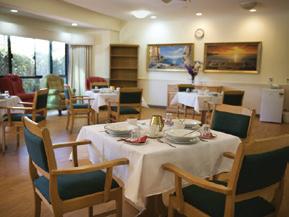

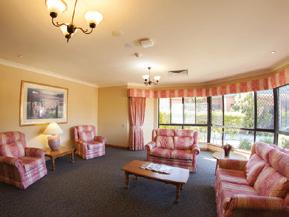
44 John Street, Midland WA 6056 contactus@midnurse.com.au 9274 3157

Resident Agreement
When do I sign? If you choose to enter into a Resident Agreement, you don’t have to sign it at the time it is offered. You may want to take time to ask your friends, family, carer, financial advisor or legal practitioner for help to go through the agreement, although you don’t have to. While there is no time limit for signing the Resident Agreement, it is in your best interest to finalise the Resident Agreement as soon as you can, as it covers your rights and responsibilities. Can I withdraw from the Resident Agreement? Should you change your mind, you can withdraw from the Resident Agreement within 14 days of signing. You will need to let your aged care home know straight away, in writing. You will still need to pay your care fees and charges for care you’ve received during the 14 days. If you’ve made any other payments to your provider during that time, you are entitled to a refund. Changes can only be made to the agreement if both you and your aged care home agree. What if I need help understanding the agreement? Since the Resident Agreement is a legally binding document, it’s important you understand everything in the document before you sign it. If you have any questions, you should ask your new aged care home. It’s their responsibility to make sure the agreement offered to you are clear. You can also ask your family, friends, carer or a legal practitioner to help you understand the terms of your agreement. The proposed agreements may not automatically include all the things that you think are important, so it is a good idea to check. If you’re having language difficulties because the agreement is not written in your preferred language, you can contact the Australian Government Translating and Interpreting Service (TIS) on 13 14 50. If you understand your agreement and want to sign it, but are physically unable to, you can ask someone with the legal authority to sign on your behalf, such as someone who holds Power of Attorney for you. Rights and responsibilities Your rights and responsibilities will be the same as those of every other resident. To make sure your rights and responsibilities are protected, there is legislation that all aged care homes funded by the Government must follow. The Charter of Residents’ Rights and Responsibilities will be displayed in your aged care home, or you can ask your home for a copy when they offer you your Resident Agreement.

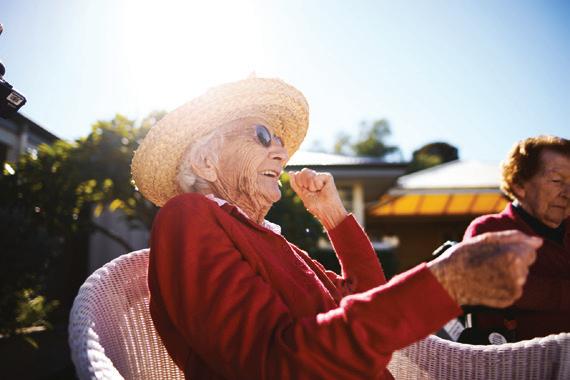
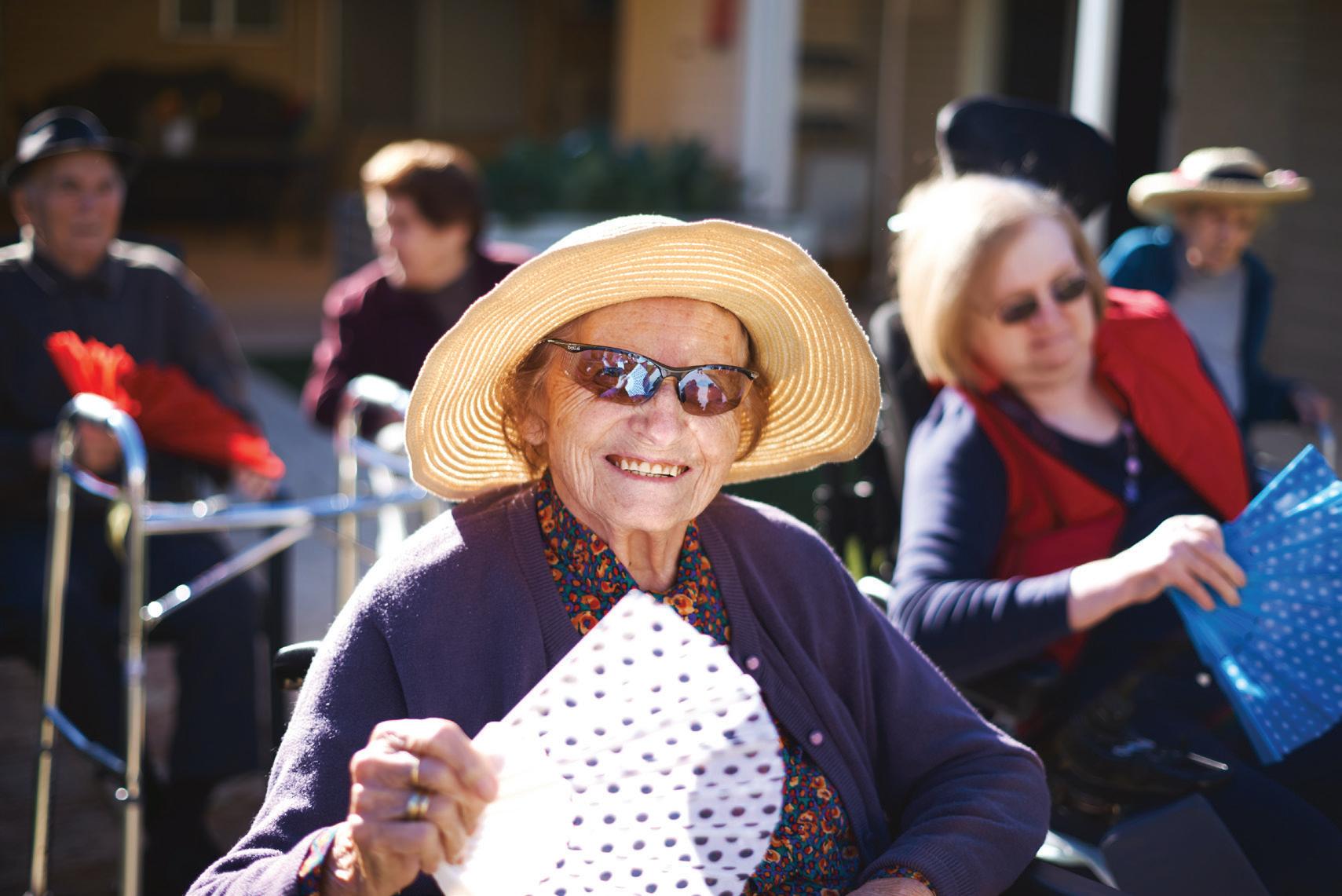

Residential respite
Taking a break
Taking some time off from caring is crucial and known as ‘respite’. Respite care offers the opportunity for both you and your carer to take a break. This may be for a few hours, a day, a night or a few weeks.
Residential respite To receive respite care in an aged care home, you require an assessment by an Aged Care Assessment Team (ACAT) except in emergencies. See page 47 for more information about ACAT. Usually, you may have up to 63 days of Government funded respite care in any financial year, and it may be possible to extend the care period by up to 21 days at a time, if deemed necessary by the ACATs. When you have received approval by the ACAT, you may apply directly to the aged care facility for respite. Access to respite care is based on eligibility and need. Although residential aged care homes are allocated respite places, they are not required to keep these solely available for respite provision. You will need to book this respite in advance, although in the case of emergencies, it can be organised quite quickly. You can also use residential respite as a way of finding out about the quality of care at a nursing home before deciding if the home is a good place for you to permanently move into. Cost For respite in a Government funded aged care home you will pay the equivalent of 85 percent of the single rate of Age Pension (called the Basic Daily Fee and currently $52.25 per day – July 2020), regardless of whether you are a pensioner or not. A booking fee may also be charged to assist in securing a place. This is a pre-payment of respite care fees, not an additional payment, and it cannot be more than a full week’s fee or 25 percent of the entire stay’s fee, whichever amount is the lowest. For respite in an ‘Extra Services’ home you may be asked to pay an extra fee to cover the cost of the higher standard of services. For more information, contact the Carer Gateway on 1800 422 737. Go to page 36 to read about respite options in your own home or community.
Extra services
Some aged care homes provide ‘extra services’, such as a higher standard of accommodation, increased entertainment options and more diverse food choices.
Extra service homes have approval from the Australian Government to offer these additional hotel type services and they come at an additional cost to the resident. ‘Extra service’ only refers to the standard of accommodation, meals, food and entertainment, and not to the level of care which is legislated to be of a high standard across all aged care homes. Services delivered and cost may vary between providers and they should be outlined in your Resident Agreement. In some cases, the whole of the home is ‘extra service’, while in others, a distinct part of that home, such as a separate building, wing or unit, is dedicated to extra services. Some of the extra services you might be offered include: A bigger room internet daily newspaper satellite TV phone choice of meals selection of beverages including wines, beer and spirits special therapies such as massage, aromatherapy or podiatry leisure/entertainment facilities. Fees Extra service fees are set by the provider and approved by the Australian Government. This is an additional charge on top of the basic daily care fee, accommodation payment all residents pay, and any means tested fee. Some providers may offer rooms with a non-optional extra service package. You can only take up the room if you agree to and pay for the extra services offered. Other providers may offer extra services as an optional package that you can choose or cancel at any time. In this case, switching from general residency to extra service residence within the same home, does not change the accommodation payment you have already agreed to when entering the home and the provider cannot charge a new or additional accommodation payment. Additional services All people in aged care homes have the option to purchase additional services such as entertainment or lifestyle choices for an extra fee. Providers can not charge additional service fees for anything that is part of the normal operation of the nursing home and you have to agree to these charges before they are being delivered. See page 120 for a list of aged care homes that offer extra services.








